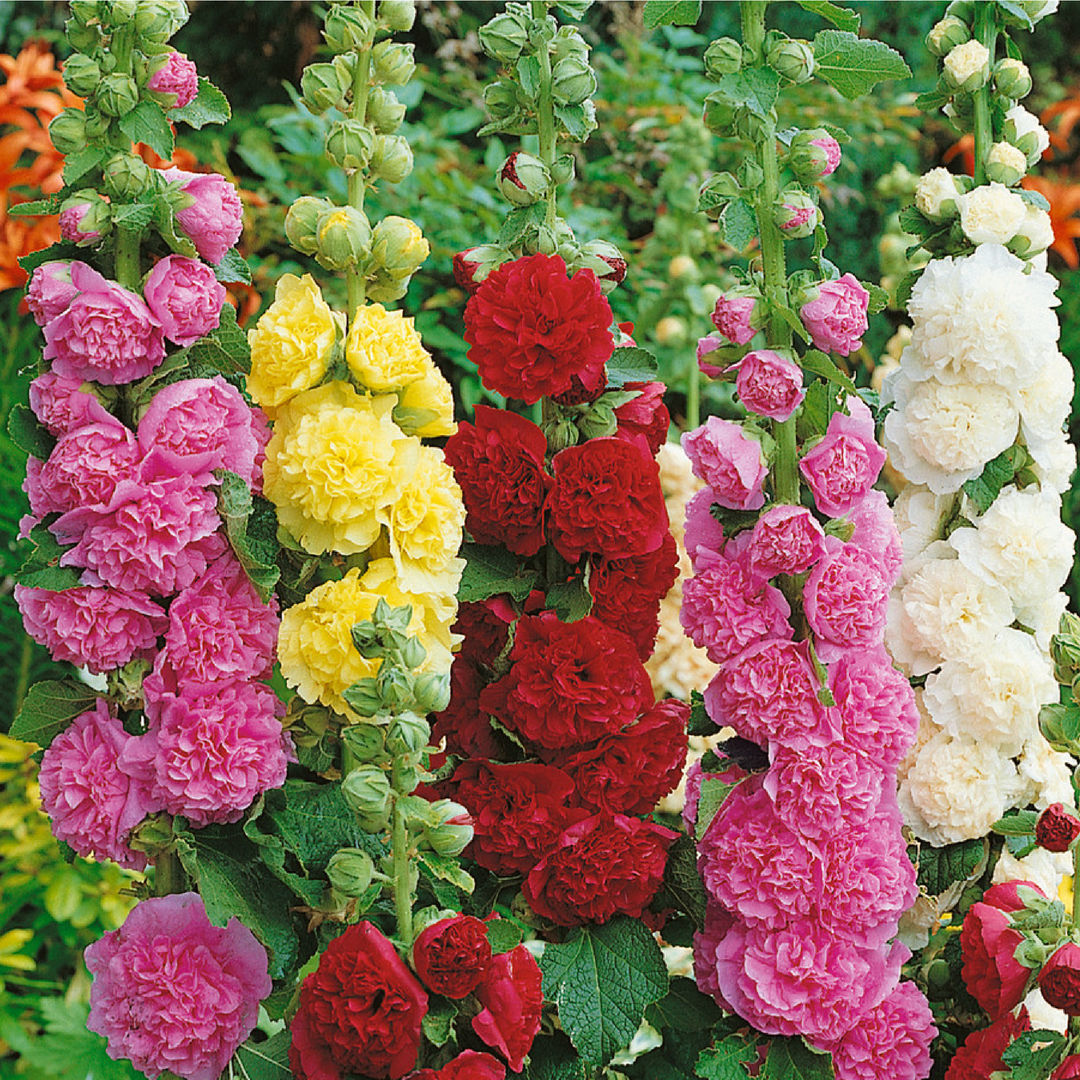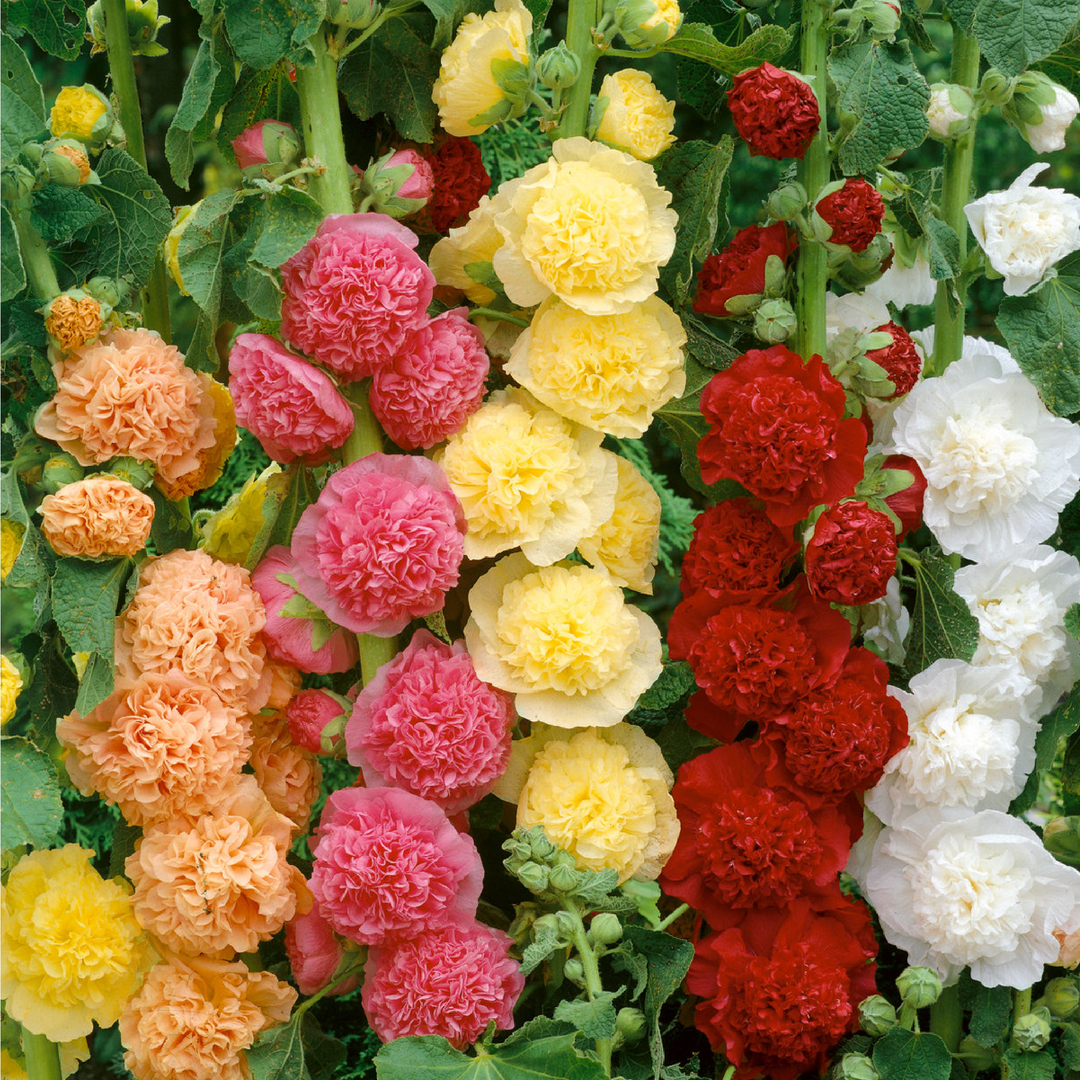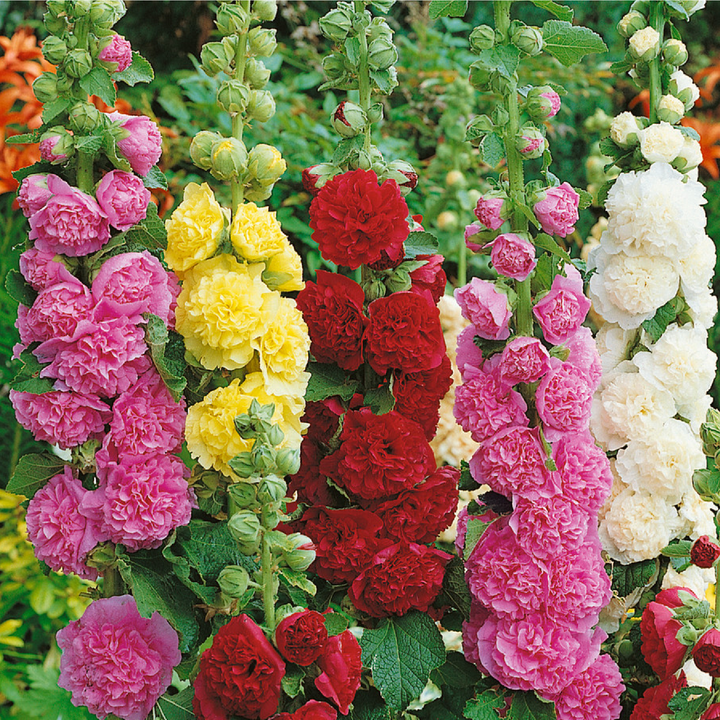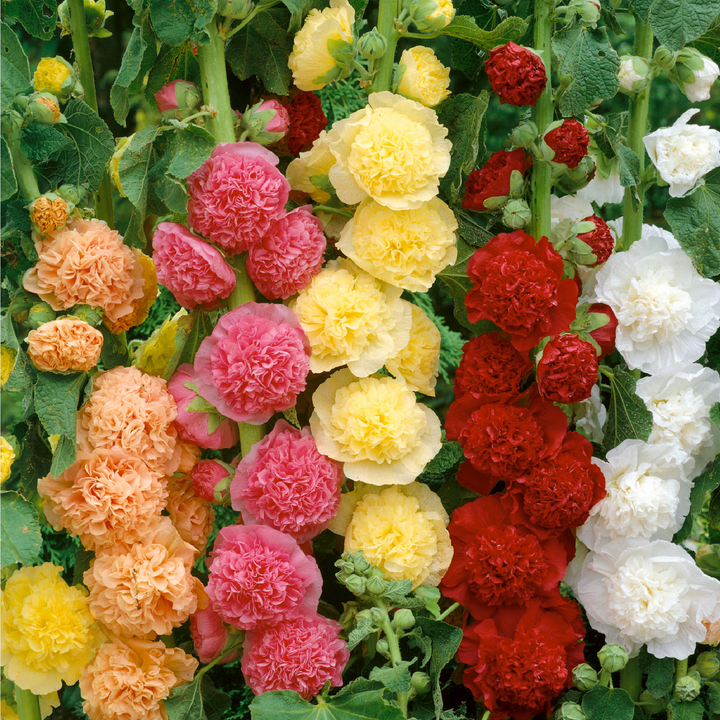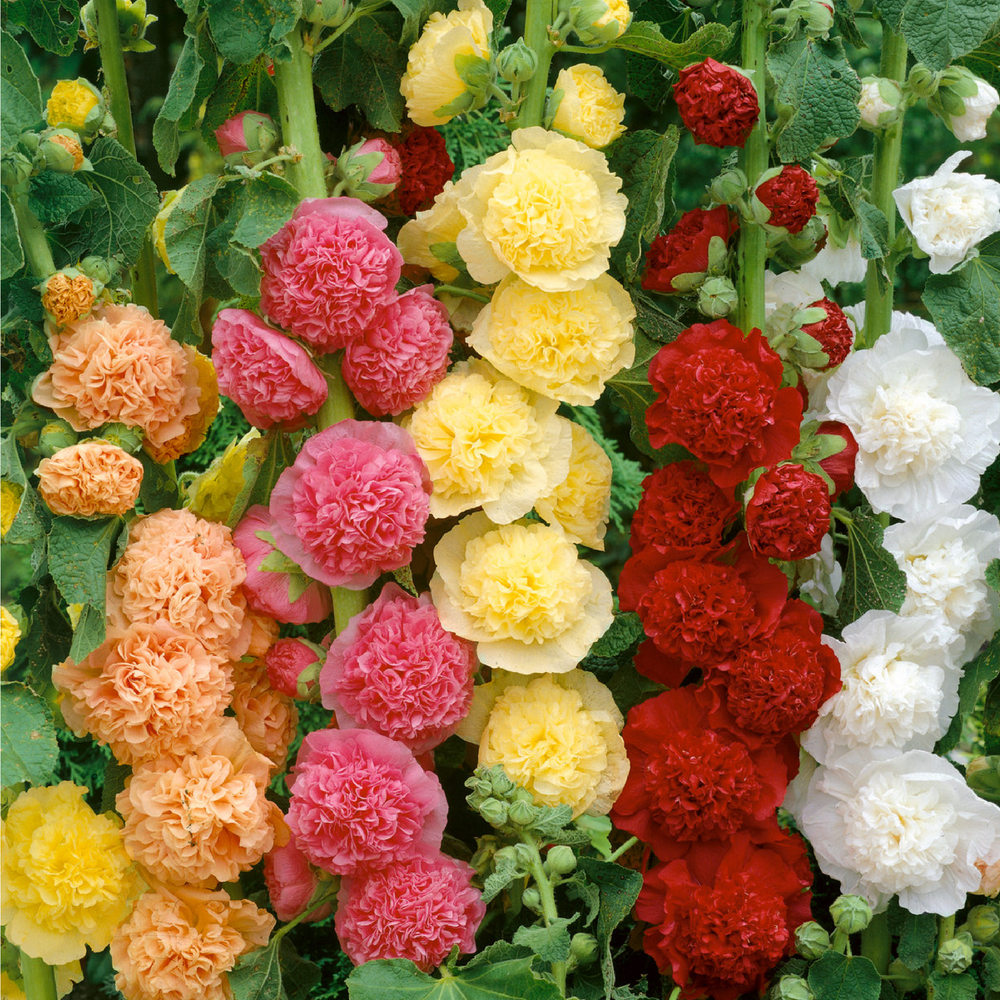HOLLYHOCK SEEDS
بذور زهور الخطميه
- Shipping all over U.A.E
- Low stock - 10 items left
- Backordered, shipping soon
1. Growing Hollyhock Seeds
-
Choosing Seeds:
Hollyhocks come in a variety of colors and types, including biennial and perennial varieties. Choose seeds based on your preference for flower color and growth cycle (biennials flower in the second year, while perennials bloom yearly after the first year). -
Preparing the Soil:
Hollyhocks thrive in rich, well-draining soil. They prefer slightly acidic to neutral soil with a pH of 6.0-7.0. If your soil is poor, amend it with compost or organic matter before planting. -
Planting Hollyhock Seeds:
- Directly sow hollyhock seeds in the garden after the last frost, as they don’t transplant well due to their long taproots.
- Plant the seeds about 1/4 inch deep, spacing them 12-18 inches apart to allow proper air circulation and prevent diseases.
- Hollyhock seeds take 10-14 days to germinate, depending on conditions. Cover lightly with soil, pat down, and water gently.
-
Germination:
Keep the soil moist, and hollyhock seeds should germinate within 2-3 weeks. Once seedlings emerge, thin them out to prevent overcrowding.
2. Caring for Hollyhocks
-
Sunlight:
Hollyhocks require full sun to thrive. They need at least 6-8 hours of direct sunlight daily. Lack of sunlight can result in weak plants with fewer flowers. -
Staking:
Hollyhocks grow tall, often reaching 6-8 feet in height, so they may require staking, especially in windy areas. Use garden stakes or tie the stems gently to a fence or trellis for support. -
Pruning and Deadheading:
Deadheading (removing faded flowers) encourages more blooms and prevents the plant from self-seeding too much. Once flowering is done, you can cut the plant down to ground level in late fall or early winter. -
Fertilizing:
Feed hollyhocks with a balanced fertilizer (10-10-10) once a month during the growing season. Avoid excessive nitrogen, as it can lead to more leaves and fewer flowers. -
Disease Management:
Hollyhocks are prone to rust, a fungal disease that causes orange or brown spots on the leaves. Ensure proper spacing for air circulation, avoid overhead watering, and remove any affected leaves to manage rust.
3. Watering Hollyhocks
-
Initial Watering:
After planting hollyhock seeds, water them lightly to keep the soil moist but not waterlogged. Hollyhocks prefer a consistent level of moisture, but they don’t like soggy soil. -
Regular Watering:
Once established, hollyhocks should be watered regularly, especially during dry spells. Water deeply, about 1-2 inches of water per week, ensuring the soil is moist to a depth of at least 6 inches. -
Watering Tips:
- Water at the base of the plant to avoid wetting the foliage, which can encourage fungal diseases like rust.
- Mulch around the base of the plant to help retain moisture and keep the roots cool.
4. Potting Hollyhocks
-
Choosing a Pot:
Hollyhocks have long taproots, so they require deep containers for proper growth. Choose a pot that is at least 12-18 inches deep and wide enough to support their tall growth. -
Soil for Pots:
Use a well-draining potting mix rich in organic matter. Mix in compost or slow-release fertilizer to give the plants a nutrient boost. -
Planting in Pots:
- Fill the pot with potting mix, leaving about 2 inches of space from the top.
- Plant the seeds about 1/4 inch deep, and space them well in larger pots.
- Place the pot in a sunny location where the plant will receive at least 6-8 hours of sunlight.
-
Care for Potted Hollyhocks:
Potted hollyhocks need more frequent watering, as pots dry out faster than garden soil. Water thoroughly when the top inch of soil feels dry. Consider staking the plants in the pot for extra support.
5. Temperature and Climate for Hollyhocks
-
Optimal Temperature:
Hollyhocks thrive in temperatures between 60°F and 85°F (15°C to 29°C). They prefer temperate climates and are best suited for USDA hardiness zones 3-9. -
Cold Weather:
Hollyhocks are frost-tolerant and can survive winter in most climates. In colder zones, mulch heavily around the base of the plant in late fall to protect the roots during the winter months. -
Hot Weather:
While hollyhocks can tolerate heat, they may struggle in extremely hot climates. In areas with scorching summers, providing some afternoon shade can help prevent the plants from wilting. -
Humidity:
High humidity can promote rust and other fungal diseases. To combat this, ensure proper spacing for air circulation and avoid wetting the leaves during watering.
If you looking for a wide range on plants and Garden accessories. Feel Free to click here.
Thank you for shopping with us! We aim to deliver your order as quickly and safely as possible.
- Processing Time: Orders are processed within 1-2 business days.
- Shipping Time: Delivery usually takes 3-5 business days, depending on your location.
- Tracking: Once your order is shipped, you’ll receive a tracking number via email to monitor your shipment.
- Shipping Costs: Shipping fees will be calculated at checkout based on your location and order size.
- Delays: Please note that during holidays or high-demand periods, there may be slight delays.
If you have any questions about your order, feel free to contact our support team. We’re here to help!


